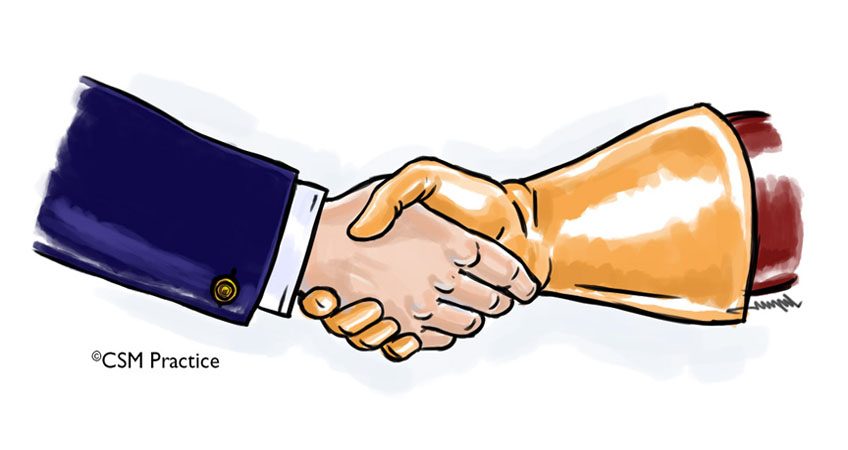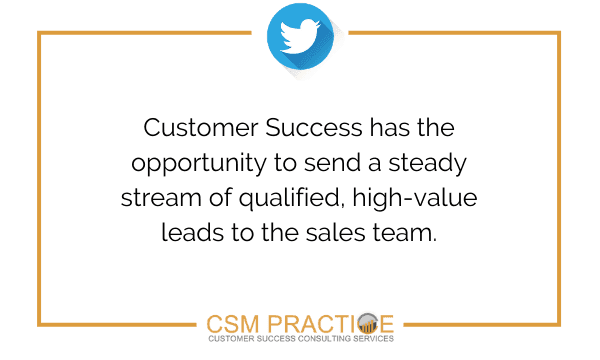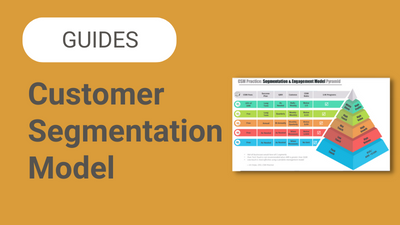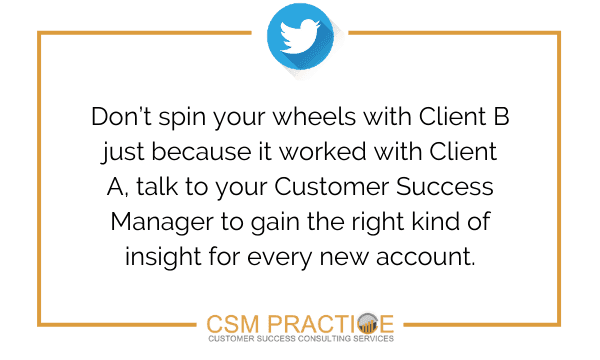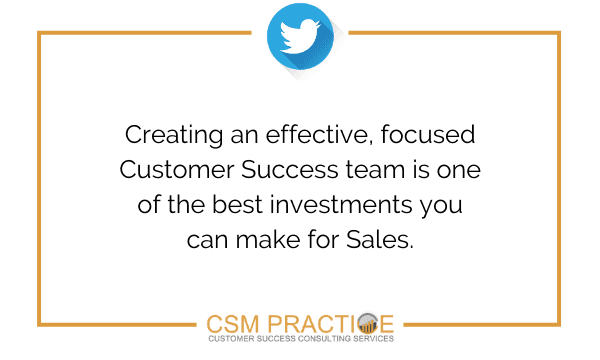Today I want to examine the optimal relationship between Sales and Customer Success. As an emerging discipline in SaaS and other recurring revenue businesses, Customer Success has to justify its existence every day. I propose that Sales and Customer Success cannot exist without each other and that together they are much more than the sum of their parts.
Customer Success Makes It Easier For Sales
One of the primary responsibilities of Customer Success is to transform super-users into empowered advocates. The people who have embraced your product and who intuitively grasp its benefits can be your company’s greatest asset… but only if Customer Success is proactive in guiding them along this path. These are the types of users who will gladly submit testimonials, and they’re happy to recommend the product to their associates in other departments and even other companies. It’s the latter type of referral that reveals the first-way Customer Success helps Sales. Customer Success has the opportunity to send a steady stream of qualified, high-value leads to the Sales team. Social proof plus accurate tracking of decision-makers and champions equal a winning recipe every time.
Customer Success Makes It More Rewarding for Sales
I touched on this above yet it’s so important it deserves special treatment here: If your company has properly segmented your customer base, according to annual recurring revenue and the potential for new licenses, your Customer Success Managers will naturally be working with your most valuable accounts. While it’s possible that champions from these accounts will refer smaller companies to Customer Success, the latter has an opportunity to shield the Sales department from these opportunities and route them to low-touch + automated onboarding strategies. Customer Success frees up your Sales team to focus their energy only on high-value accounts… and as we saw above, Customer Success will naturally refer precisely that type of new business to Sales.
Customer Success Can Inform Sales’ Tactics and Strategies
Customer Success interacts with individuals in a wide range of departments in their clients’ companies. This gives them a great opportunity to track users’ sentiments about the onboarding process and the features that were discussed (or not discussed) while they were still working with Sales. This is precisely the type of detailed intelligence Sales needs to polish their pitch in real-time. If this worked for this type of customer, but not for that customer, Customer Success will know it and pass it along to Sales. Attention Sales: Don’t spin your wheels with Client B just because it seemed to work with Client A. Talk to your Customer Success Manager to gain the right kind of insight for every new account.
Customer Success Can Shape The Context Of Sales’ Interactions With Prospects
This goes beyond the right way to pitch specific kinds of clients. Let’s take the most basic example: your product team is close to launching a beta version of a new feature, and they’re rolling it out to a select group of your top accounts. Customer Success will be guiding those clients through the adoption of the new features, and they’re perfectly positioned to track their experience. Once these clients have reached a point where the benefits of the new feature far outweigh the challenges from any bugs, Customer Success can feed that data to Sales. “We’re planning to introduce Feature XYZ to all our customers in the next three months, yet early reports from our top clients have been extremely favorable, especially in the areas of ABC.” This may be a simple example, but it perfectly illustrates the ability of Customer Success in helping Sales move the needle on specific prospects. As a Salesperson, it’s incredibly empowering to hear a formerly-reluctant prospect say, “I’ll sign with you because you’ve assured me Feature XYZ will have advanced past the beta stage in the next 3 months – that’s exactly what we’ve been looking for.” Customer Success can create these types of moments for Sales every single day.
Finally, Customer Success can help make a Salesperson’s career
The best Salespeople know every detail of their commission plans like the back of their hands. Yet occasionally it’s challenging for Sales to gain a meaningful perspective on what their customers are doing 12, 18, or even 24 months after they’ve closed the deal. This is where Customer Success really shines. The best Salespeople are always learning, always refining their techniques. What better way to demonstrate their company’s value proposition to prospects than by citing the ongoing achievements of their existing clients? By now it should be clear that Customer Success is in a perfect position to both ensure and communicate that success.
Much has been written about the responsibilities of Customer Success in helping their clients achieve their goals through strategic planning, driving advocacy and adoption, and creating an environment in which churn becomes impossible. Yet there’s one role that hasn’t been discussed as much, which I hope this post has helped illustrate:
Customer Success = Sales Enablement
Creating an effective, focused Customer Success team is one of the best investments you can make for Sales. If you want to go one step further, match each of your Customer Success Managers with one of your Sales Executives. When everyone is focused on increasing recurring revenue across the customer base, the attitudes of your Customer Success Managers will complement the temperament of your Sales Team. But you don’t need to wait to share the value of Customer Success with your Sales team. Customer Success is poised at the nexus between new customers and future revenue, and your company’s fate is inextricably tied to Sales’ ability to leverage that wisdom. Make the most of it, and your business will thrive.

